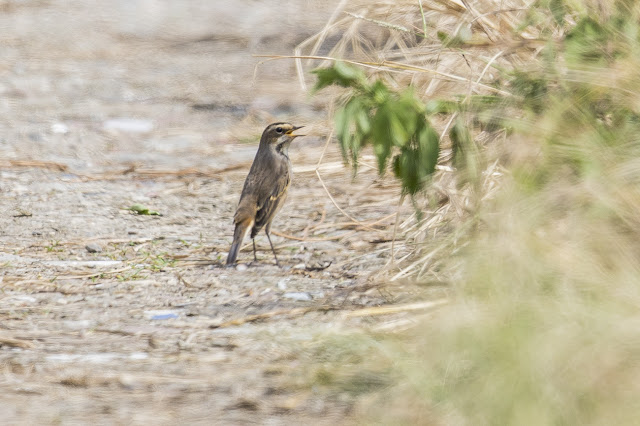Eurasian Wryneck - an attraction at Long Valley at the moment
An afternoon stroll at Long Valley proved to be quite productive, it is not surprising given the time of the year. Other than the usual suspects you would expect at this time of the year, a Eurasian Wryneck had very kindly been active near Ho Sheung Heung side. As always, Wryneck is a huge draw for photographers, I understand why as they are truly charismatic birds to look at.
Photographers lining up to get a shot at the Wryneck
It wasn't long before the Wryneck hopped into view, it had been active around an ant nest that it found under a small tree. The ants had made a nest out of an old wood board, the Wryneck feasted on those ants using it's specialised long tongue. The bird looked pretty contented with this 'restaurant' and seemed completely oblivious to the few dozens of photographers surrounding it...
Eurasian Wryneck - a very entertaining bird
Other goodies at Long Valley included up to nine Russet Sparrows feeding at the paddies! This is however not the highest ever count, the honour goes to fourteen birds in October 2012. This is still my personal high count by a long way, we usually just get single birds, pairs at most. There was one young looking male within the flock, with reddish brown cap and back.
Russet Sparrow - female
Russet Sparrow - male
Russet Sparrow - two of the nine birds at Long Valley
I was later joined by John Holmes while watching the Russet Sparrows, we later saw another single Russet Sparrow perched on a wire, incidentally it was the exact same spot that I saw the female House Sparrow. Here's a good comparison between the two species, of which there have been occasional mis-identification of. The main difference is size, as House Sparrows are much chunkier and longer, while Russets are only slightly larger than Munias even in flight, you also get more of a reddish tone to the nape and back area.
Russet Sparrow - female
House Sparrow - female from November 2017
We visited the Wryneck again and was delighted to find it perched on a low branch. This Wyrneck is easily the most photogenic I've seen. Eurasian Wrynecks are extremely widespread globally, ranging from Europe all the way East Asia. There are six recognised subspecies, and the one we get in Hong Kong is most likely race chinensis which breeds in Eastern Siberia and Central China.
Eurasian Wryneck
A pair of Himalayan Swiftlet zoomed past before I left, this is the second time I've seen them at Long Valley. This species is a scarce passage migrant in Hong Kong, and is at the moment the only swiflet species we get here, although it is not impossible for other swiftlet species such as the Germain's Swiftlet to turn up...we will just have to keep looking.
Himalayan Swiftlet










































































